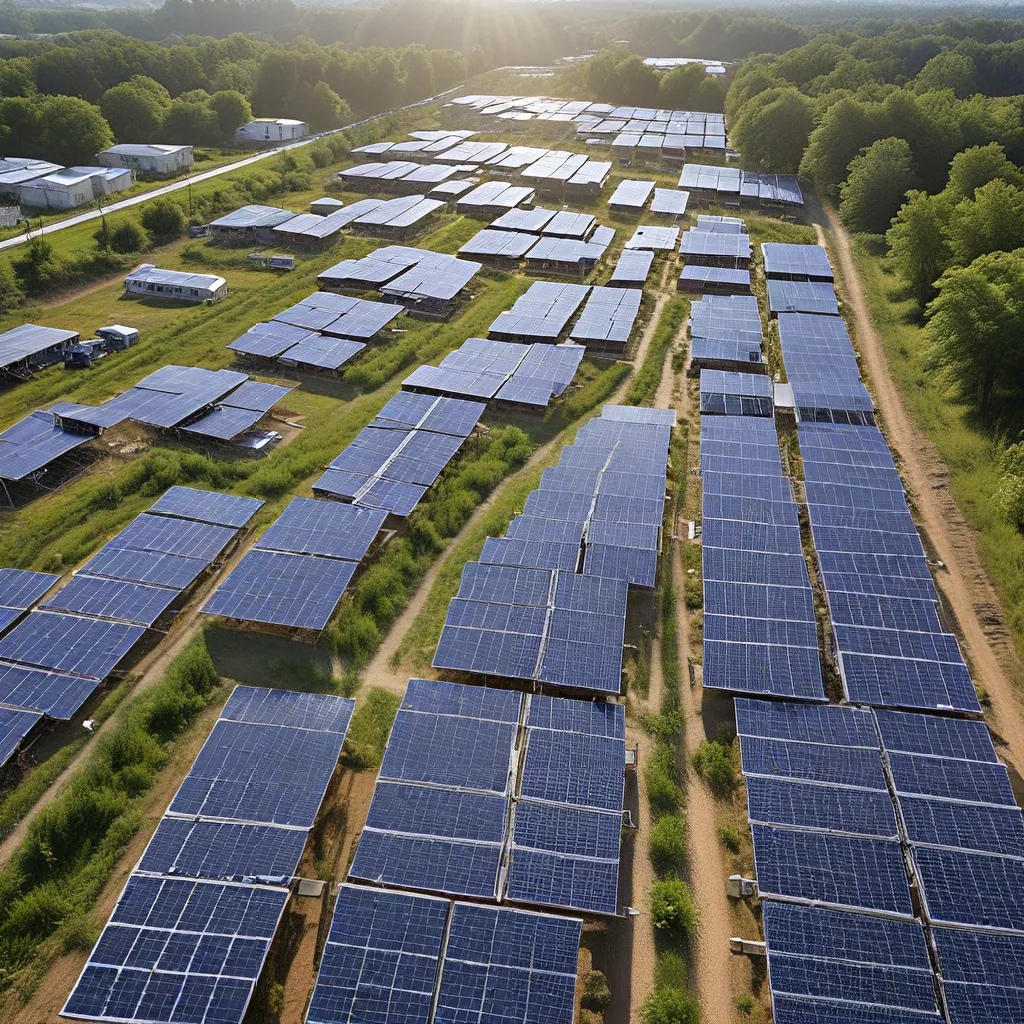
As I delve into the captivating world of microgrids, I can’t help but feel a surge of excitement. These small-scale, decentralized power systems are poised to revolutionize the way we think about energy, and I’m thrilled to share their transformative potential with you.
The Rise of Decentralized Power
Gone are the days when the energy landscape was dominated by colossal, centralized power plants. The future is all about decentralization, and microgrids are leading the charge. Imagine a world where every home, business, or community has its own self-sufficient energy source, seamlessly integrated with the larger grid. This is the vision that’s rapidly taking shape, and it’s a game-changer.
Decentralized energy systems are the antithesis of the traditional, top-down approach. Instead of relying on a single, massive power plant to serve an entire region, microgrids empower communities to generate, store, and distribute their own electricity. This shift in paradigm not only enhances resilience but also fosters a sense of energy independence and self-sufficiency.
The Resilience Factor
In a world where extreme weather events and cyber threats are becoming increasingly common, the resilience of our power grid has never been more crucial. Here’s where microgrids shine like a beacon of hope. When the centralized grid falters, these nimble, localized systems can seamlessly “island” themselves, ensuring that critical infrastructure and essential services remain powered.
“Resilience—for the grid, for the people operating the grid, for Ukraine—is essential for the country now and as they look to the future.”
As Ukraine’s grid operators demonstrated during the recent invasion, the ability to transition to “island mode” and synchronize with the European Union’s grid was a testament to their ingenuity and the power of decentralized systems. This adaptability is precisely what makes microgrids a vital component of a robust and resilient energy future.
The Renewable Advantage
But the benefits of microgrids extend far beyond their resilience capabilities. These systems are increasingly embracing the power of renewable energy sources, further enhancing their sustainability and environmental impact.
Imagine a community microgrid that harnesses the sun’s energy through rooftop solar panels, stores excess power in battery banks, and seamlessly integrates with backup generators to ensure uninterrupted power. This marriage of renewable generation, storage, and intelligent controls is the foundation of a decarbonized and energy-efficient future.
“Renewable energy can build a more resilient energy system in two ways. But renewables don’t inherently make a grid more resilient. They need to be designed to be more resilient.”
As NREL’s Eliza Hotchkiss explains, the key is in the design. By thoughtfully integrating renewable sources and storage, microgrids can not only reduce their carbon footprint but also bolster their resilience in the face of disruptions.
Empowering Communities
Microgrids aren’t just about technology; they’re about empowering communities and fostering a sense of energy ownership. When people have the ability to generate, manage, and even sell their own electricity, it leads to a deeper understanding and engagement with their energy usage.
This shift in mindset can have a ripple effect, encouraging energy-efficient behaviors and a greater appreciation for the value of clean, reliable power. Suddenly, the concept of “energy independence” becomes a tangible reality, rather than an abstract idea.
The Microgrid Ecosystem
As the microgrid revolution gains momentum, we’re witnessing the emergence of a vibrant ecosystem of players, each contributing to the larger vision. From renewable energy developers and smart grid technology providers to energy management software companies and community organizations, the stage is set for a collaborative and innovative future.
This ecosystem is fostering new business models, funding mechanisms, and regulatory frameworks to support the widespread adoption of microgrids. And with the increasing affordability and accessibility of renewable technologies, the path to a decentralized, sustainable energy future is becoming increasingly attainable.
Navigating the Challenges
Of course, the transition to a decentralized energy landscape isn’t without its challenges. Integrating microgrids with the existing grid infrastructure, ensuring cybersecurity, and managing the complexities of real-time data and control systems are just a few of the hurdles that must be overcome.
“Firstly, not all power grids are ready for decentralization. Reliable internet connections, smart meters, and two-way power flows do not exist across all power grids.”
As the article on decentralization and energy points out, the transition to a smart, digitized energy landscape requires significant infrastructure upgrades and regulatory reforms. But with the right policies, investments, and collaborative efforts, these challenges can be surmounted.
Embracing the Future
At the heart of the microgrid revolution lies a vision of a more resilient, sustainable, and empowered energy future. By decentralizing power generation and distribution, we can enhance the reliability of our energy systems, reduce our carbon footprint, and empower communities to take control of their energy destiny.
As I reflect on the transformative potential of microgrids, I can’t help but feel a sense of optimism and excitement. The future is within our grasp, and with the right mindset and collective action, we can unlock the boundless possibilities of decentralized energy. Let’s embrace this revolution and build a brighter, more resilient energy future together.